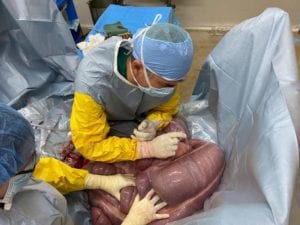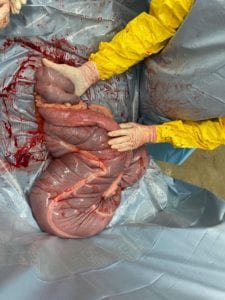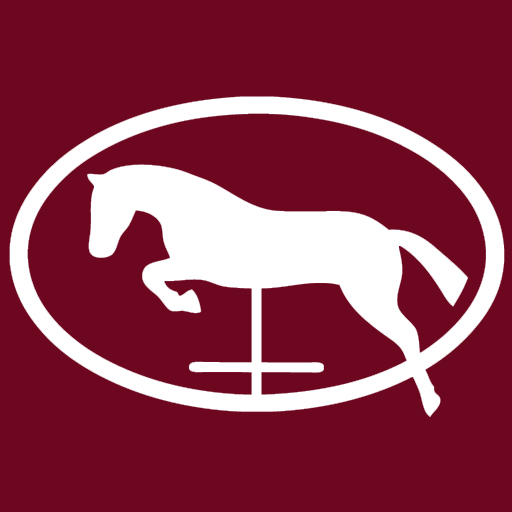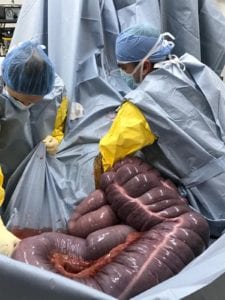#AskTheVet with Dr. Petrisor Baia
Question: What is a Colon Torsion?
Answer: A while back on our Facebook page we shared a “happy tail” about a horse named Chief who presented signs of colic which led to an intraoperative diagnosis of a 360 degree clockwise torsion of the large colon. So what is a colon torsion?
Colon torsion or twisting of the large colon is one of the most painful and serious forms of colic in horses. It accounts for more than 15% of colic surgeries and even when there is prompt surgical intervention to untwist the colon, it can still be fatal. This is why the condition is life-threatening even after surgical intervention. It can occur very rapidly and this speed of deterioration is responsible for the high death rate of the condition. Death can occur within 4–24 hours from the start of the first colic signs.
All ages and breeds of horses can be affected, but adult horses, and in particular brood mares (13 times more likely than geldings or stallions) late in the pregnancy or within ~120 days post-foaling are at the greatest risk. The exact reasons why post-foaling mares are at higher risk are not yet clear.
The large colon is 3–3.7m in length and contains over 100l of fluid. It fills the majority of the lower part of the abdomen and is arranged in a double horseshoe location. Despite its size the colon is very mobile. It can twist about itself up to 180 degrees within the horse’s abdomen, without causing the animal a problem.
If the giant organ twists more than 270 degrees, it cuts off its own blood supply which impairs or compromises its own protective barrier function. This allows large quantities of toxins into the horse’s systemic circulation. Even when the colon is untwisted or removed during surgery, the horse can remain in toxic shock. (See video on our Facebook page)

There have been reports that 36–74% of colon torsions survive to discharge from the hospital, which vary dramatically depending on how quickly they are taken to surgery from the onset of the colic symptoms and also the degree of torsion.

Helpful Hints
A recent study investigating the large colon torsion in the horse (J. Suthers et.al., 2013) has identified management practices that could be modified in ‘at high risk ‘ horses of this disease by:
- Maximizing turnout
- Avoiding sudden increases in the duration of stabling
- Providing regular, quality dental care
- Avoiding feeding sugar beet
- Minimizing the number of horses on a premises, or managing horses in smaller groups
- Avoiding sudden changes in the amount of hay or haylage a horse is fed
- Minimizing the number of people involved in a particular horse’s care
- Making changes to your horse’s management and diet gradually
Recent Posts
About Us
At B.W. Furlong & Associates, we are progressive leaders delivering the ultimate in veterinary care to our equine patients and clients in both the hospital and ambulatory setting. We have several associated practices offering exemplary care and services in New Jersey, Florida, and Virginia

